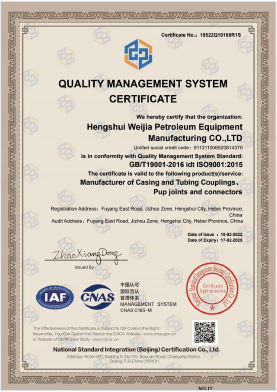- Afrikaans
- Albanian
- Amharic
- Arabic
- Armenian
- Azerbaijani
- Basque
- Belarusian
- Bengali
- Bosnian
- Bulgarian
- Catalan
- Cebuano
- Corsican
- Croatian
- Czech
- Danish
- Dutch
- English
- Esperanto
- Estonian
- Finnish
- French
- Frisian
- Galician
- Georgian
- German
- Greek
- Gujarati
- Haitian Creole
- hausa
- hawaiian
- Hebrew
- Hindi
- Miao
- Hungarian
- Icelandic
- igbo
- Indonesian
- irish
- Italian
- Japanese
- Javanese
- Kannada
- kazakh
- Khmer
- Rwandese
- Korean
- Kurdish
- Kyrgyz
- Lao
- Latin
- Latvian
- Lithuanian
- Luxembourgish
- Macedonian
- Malgashi
- Malay
- Malayalam
- Maltese
- Maori
- Marathi
- Mongolian
- Myanmar
- Nepali
- Norwegian
- Norwegian
- Occitan
- Pashto
- Persian
- Polish
- Portuguese
- Punjabi
- Romanian
- Russian
- Samoan
- Scottish Gaelic
- Serbian
- Sesotho
- Shona
- Sindhi
- Sinhala
- Slovak
- Slovenian
- Somali
- Spanish
- Sundanese
- Swahili
- Swedish
- Tagalog
- Tajik
- Tamil
- Tatar
- Telugu
- Thai
- Turkish
- Turkmen
- Ukrainian
- Urdu
- Uighur
- Uzbek
- Vietnamese
- Welsh
- Bantu
- Yiddish
- Yoruba
- Zulu
Understanding the distinctions between casing and tubing in oil and gas drilling operations
Understanding the Difference Between Casing and Tubing in Oil and Gas Drilling
In the oil and gas industry, understanding the components of a well is crucial for successful drilling and production operations. Among these components, casing and tubing play vital roles, but they serve distinctly different purposes. This article explores the differences between casing and tubing, their functions, materials, installation processes, and importance in drilling operations.
Definition and Purpose
Casing is a set of pipes that are cemented into the drilled wellbore to provide structural integrity and isolate the formation fluids from groundwater. It acts as a protective barrier to prevent the collapse of the well walls, protecting the well from contamination and ensuring that fluids do not seep into unwanted areas. The primary purpose of casing is to maintain the stability of the borehole and protect the environment around the well.
In contrast, tubing is the pipe that runs inside the casing, serving as the conduit for oil, gas, or other fluids to flow from the reservoir to the surface. It allows for the efficient extraction of resources after the well has been drilled and cased. Tubing is essential for production operations, as it enables controlled flow rates and pressure management during production.
Materials and Design
Both casing and tubing are typically made from steel, which provides the strength and durability needed to withstand the harsh conditions encountered underground, including high pressures and corrosive environments. However, there are variations in design and thickness between the two.
Casing comes in different sizes, weights, and grades, often selected based on the specific geological conditions of the wellbore
. It is usually thicker than tubing to ensure it can handle the external pressures and provide adequate support to the well structure.Tubing, on the other hand, is specifically designed to transport fluids. It usually has a smaller diameter than casing and is often lighter, allowing for easy handling and installation. The selection of tubing size and weight is crucial, as it directly impacts the flow rate and efficiency of production.
what is the difference between casing and tubing?

Installation Process
The installation of casing occurs in several steps after drilling the well to its desired depth. Once the drilling is complete, casing is lowered into the borehole and cemented into place. This cementing process not only secures the casing in position but also fills the annular space between the casing and the wellbore to further enhance its structural integrity and seal off different pressure zones.
Following casing installation, tubing is then inserted through the casing. This process is typically carried out after the well has been completed, and it may involve the use of various tools and techniques to ensure that the tubing is properly positioned and sealed at the top.
Importance in Drilling Operations
The distinction between casing and tubing is vital in well construction and production. Casing acts as the first line of defense against wellbore collapse and contamination, while tubing is essential for the extraction of hydrocarbons. Inadequate casing can lead to well integrity issues, affecting safety, environmental protection, and overall productivity.
Moreover, the selection of appropriate casing and tubing materials is critical to ensuring long-term success. Factors such as temperature, pressure, and the chemical composition of the produced fluids influence material choice, emphasizing the need for thorough planning and engineering.
Conclusion
In summary, casing and tubing are two essential components of oil and gas drilling that serve different but complementary functions. Casing provides structural support and environmental protection, while tubing facilitates the extraction of resources. Understanding these differences is crucial for professionals in the industry, as it impacts the operational efficiency and safety of drilling and production activities. As the demand for energy continues to grow, the importance of effectively managing these elements in well construction remains paramount.
-
Tubing Pup Joints: Essential Components for Oil and Gas OperationsNewsJul.10,2025
-
Pup Joints: Essential Components for Reliable Drilling OperationsNewsJul.10,2025
-
Pipe Couplings: Connecting Your World EfficientlyNewsJul.10,2025
-
Mastering Oilfield Operations with Quality Tubing and CasingNewsJul.10,2025
-
High-Quality Casing Couplings for Every NeedNewsJul.10,2025
-
Boost Your Drilling Efficiency with Premium Crossover Tools & Seating NipplesNewsJul.10,2025







